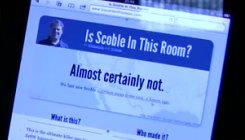[youtube http://www.youtube.com/watch?v=Ai9g0zlLPpQ&w=560&h=315&wmode=window&h=315]
I don’t know of anyone who has spoken to more startups than Robert Scoble, Startup Liaison At Rackspace. As part of his job he interviews startups and keeps a personal list of 1,100 of them on Facebook. TechCrunch Disrupt, I chatted with him about what it takes to find a job and for one of the hot ones.
Finding the Right One
First, you have to ask yourself where your risk/reward needle lands. “If you’re starting with one that’s starting that day, and it doesn’t have a product, then that’s risky,” said Scoble. “Heck, if you’re that person you’re probably already a founder.” In fact, he agreed with many industry experts when he observed, “The best way to start with a good startup is to start it yourself.” If you’re not a founder and still want to work at a new company, you’re still in luck. Demand is super high for tech help. Startups are looking for all types of talent, such as people who can build iOS apps and know Objective-C, or data scientists who can build back-end systems.
The New Trend
Personalization, or what Scoble calls “contextual applications,” is one of the hottest trends in startups right now. One such tool to get you there is Qualcomm’s Gimbal, an SDK to build contextual apps. These apps know where you are, what you liked on Facebook or which friends are around you. It then takes all of that and personalizes it. As examples, Scoble offering up Google Glasses and Kayak’s new model that sends notifications that change depending on your location, such as when you’re at the airport or on the plane. “The notifications should change to who you are and what your intent is, and what you’re doing,” said Scoble. “The context of what you’re doing.”
Past Failures
Scoble says one indicator of a failing startup is the number of “likes” it has on Facebook. A low number signals that nobody knows enough about it to or just isn't excited. Launching a startup isn't easy, Scoble points out. It takes three very distinct steps that require a ton of work. First, you have to get people to try out your product. That requires attending conferences and demoing over and over again. Then you need to get people to use it. Finally you want to get people thrilled about it. The odds for success are low. At the beginning, to survive you’re just trying to get your first 100,000 customers and first 1,000 “likes” on Facebook. “A lot of them don’t do the basics of explaining what they do and how they’re differentiated, or do any product marketing that makes sense,” said Scoble. “It’s hard to do a startup. That’s why I don’t do them,” he admits. “I like to sit back and study them.”



